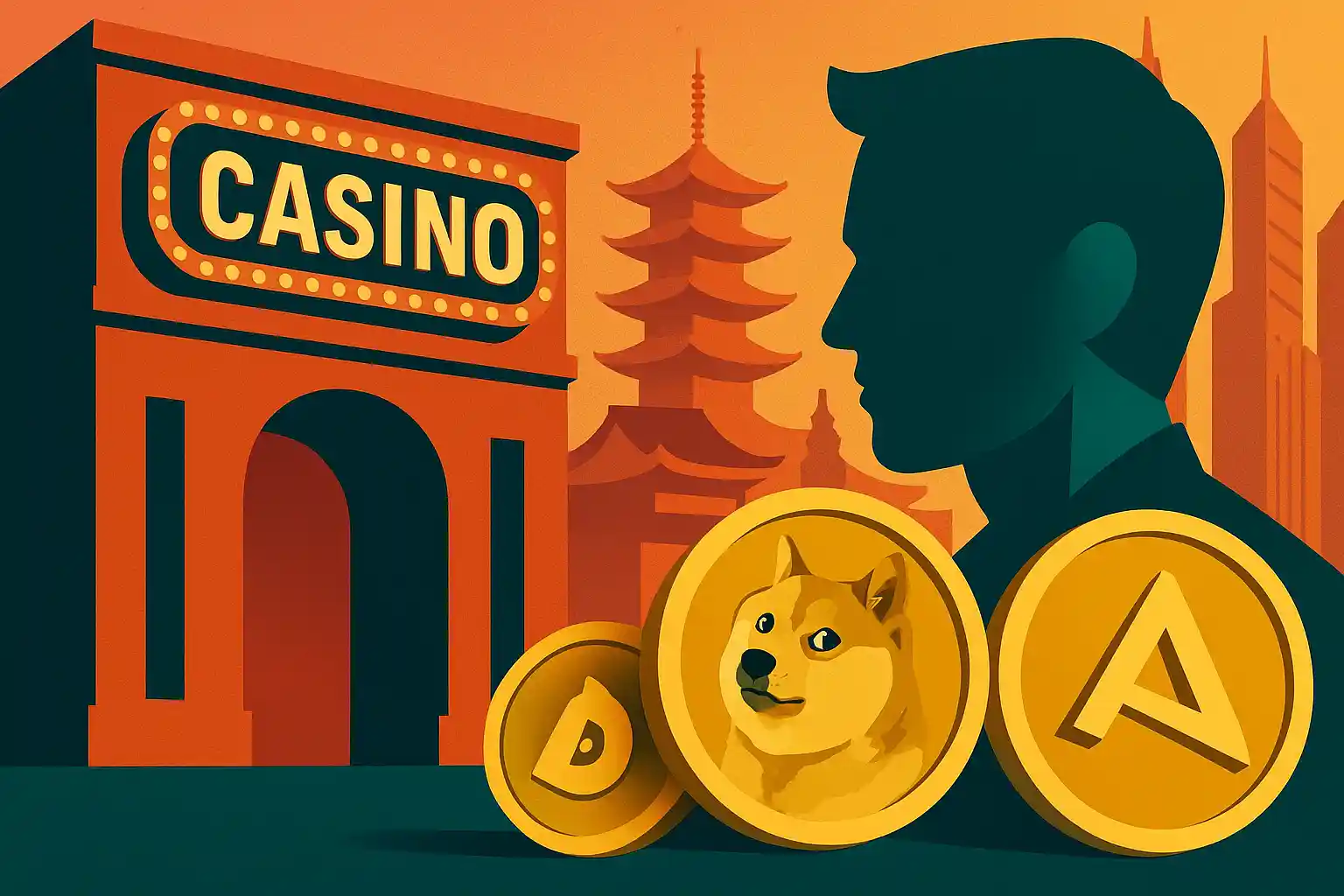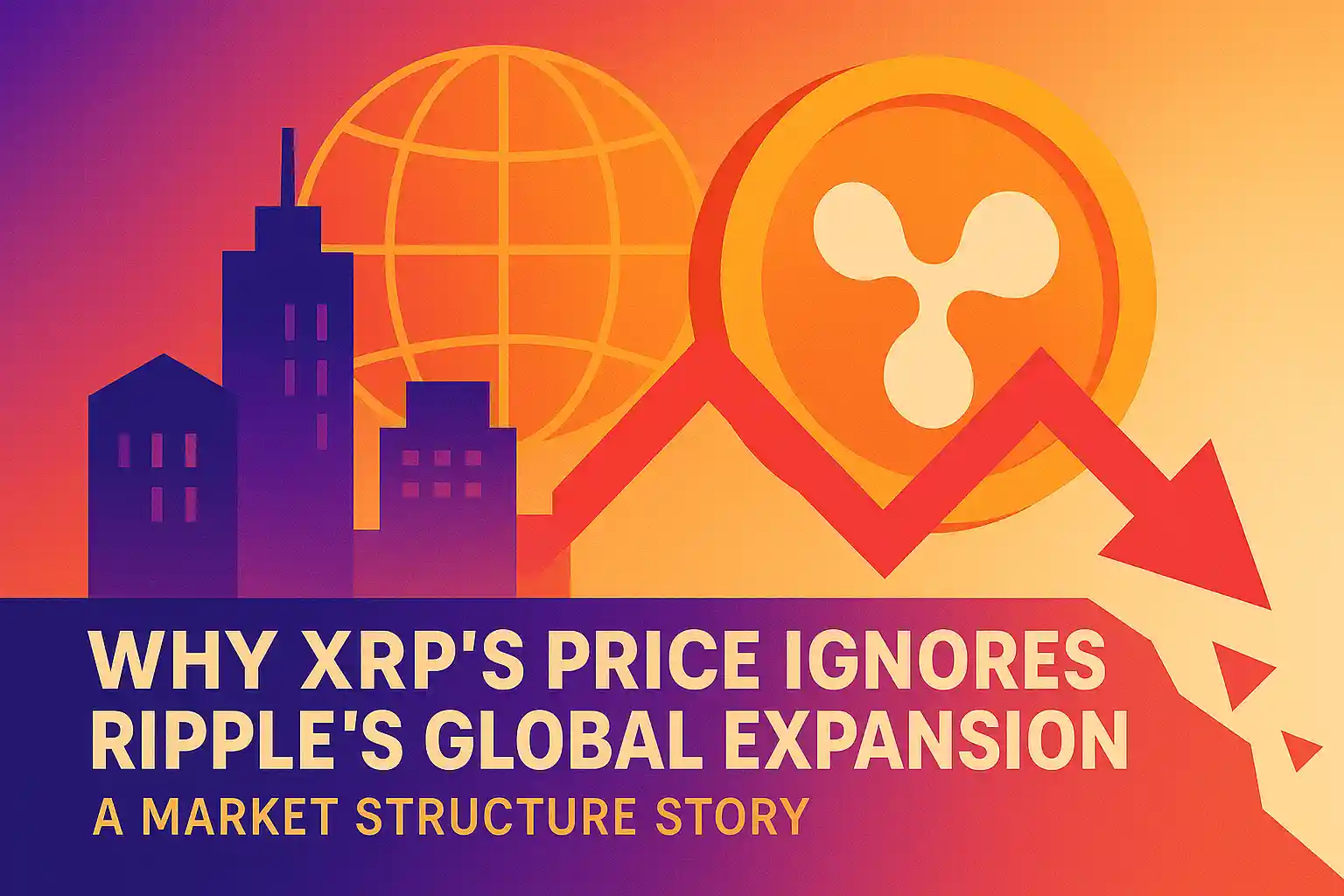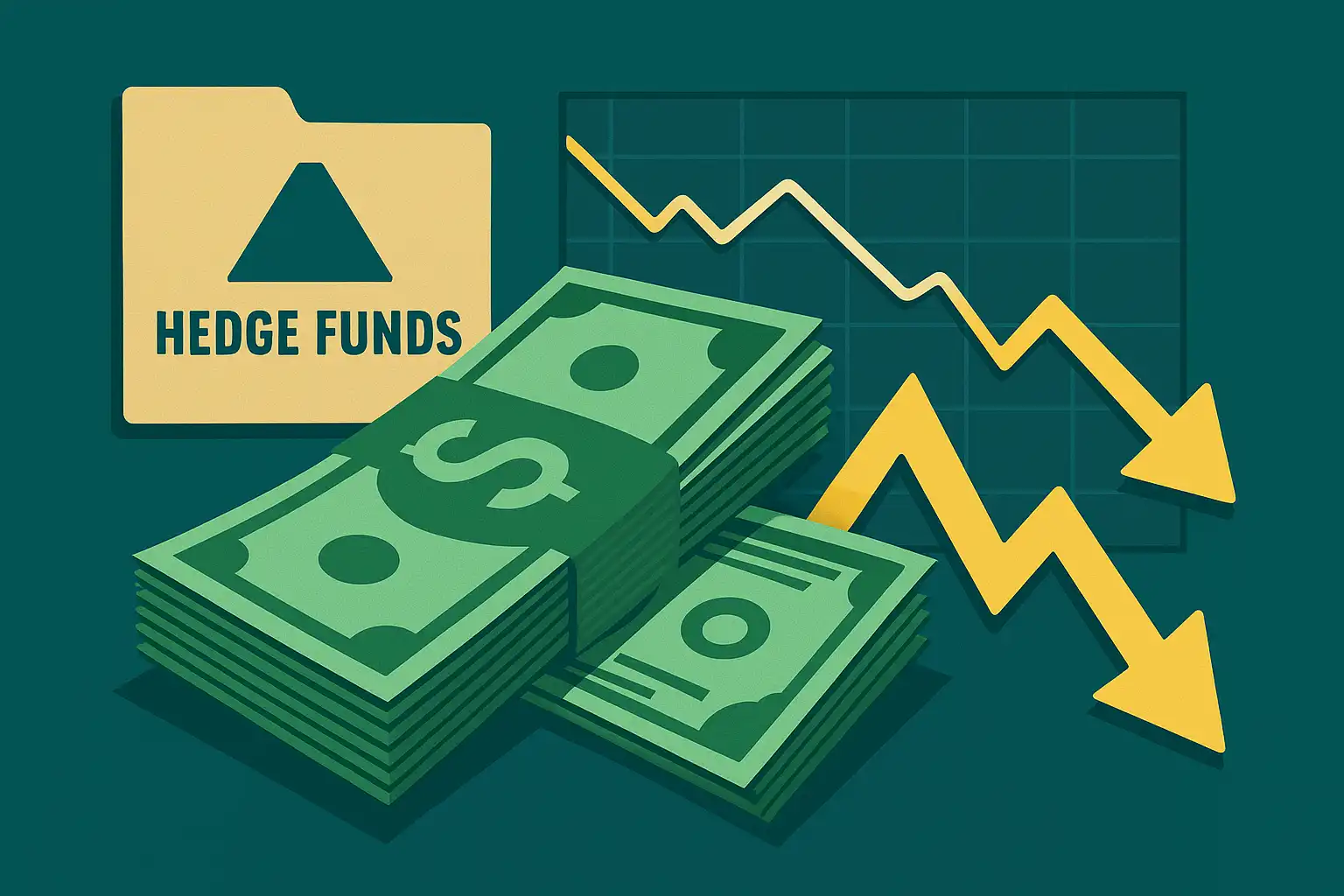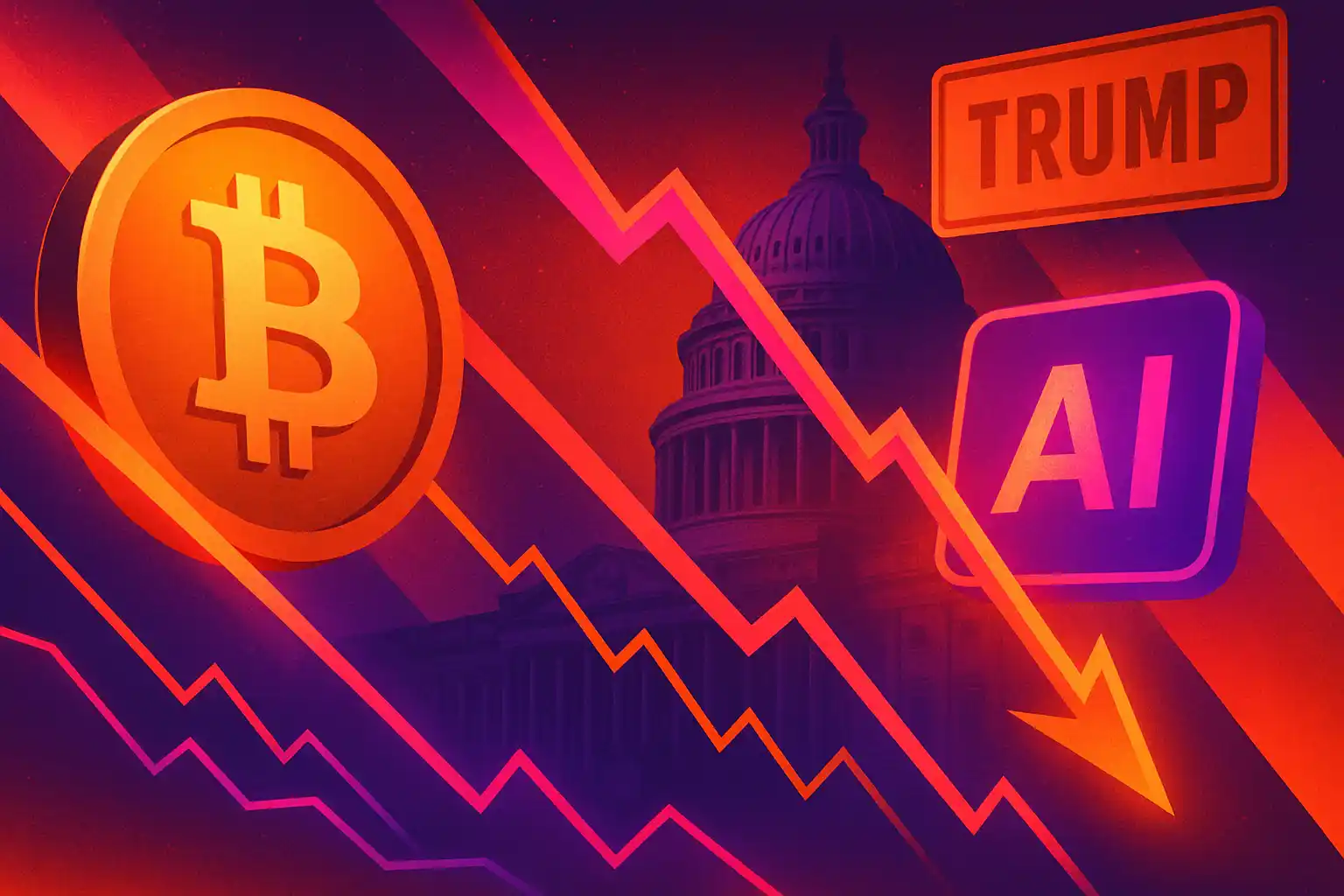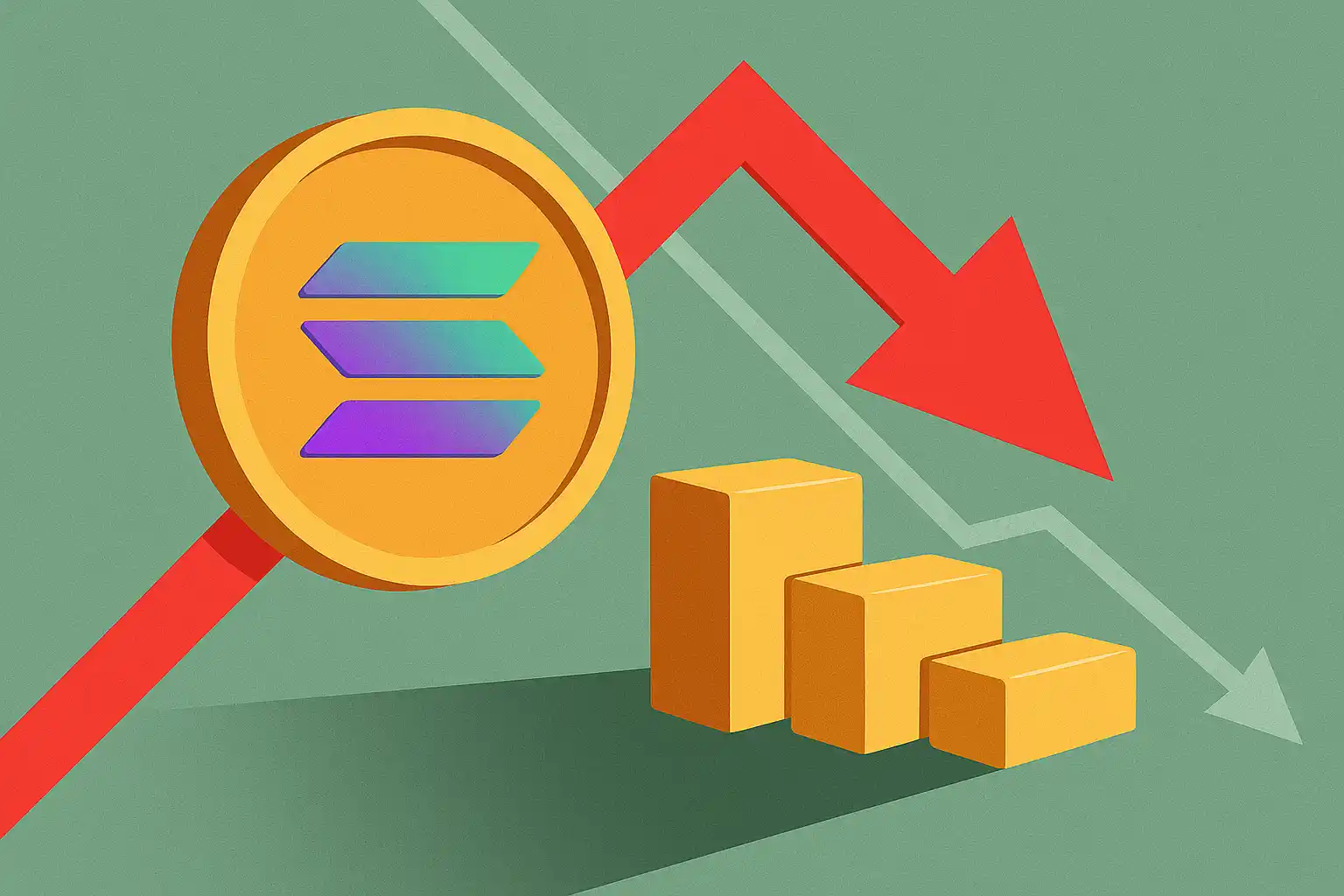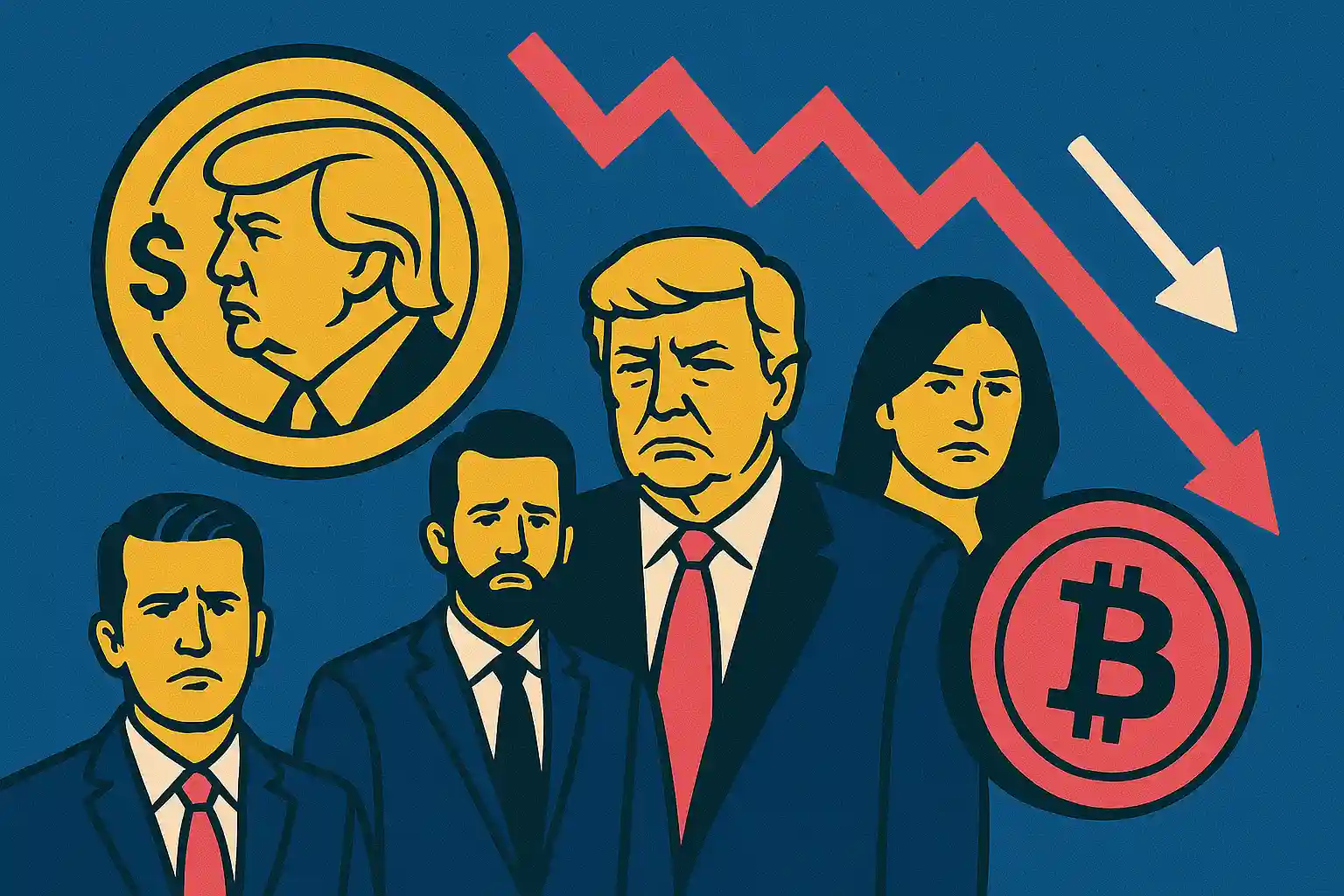XRP Utility Questions Mount as Ripple Expands Into Traditional Finance Without Token Integration

In Brief
XRP utility faces scrutiny as Ripple’s acquisitions of Hidden Road and GTreasury expand traditional finance footprint without integrating the token.
RLUSD stablecoin sees 88% of its $789 million supply deployed on Ethereum rather than XRP Ledger, limiting fee burns and network activity.
Ripple continues funding operations through periodic XRP sales from escrow, contradicting narrative of token as functional bridge currency.
Planned $1 billion XRP buyback for digital asset treasury raises questions about whether strategy supports genuine utility or price stabilization.
Growing disconnect between Ripple’s fintech success and XRP’s marginal role in new services challenges long-term token value proposition.
XRP utility is facing intensifying scrutiny as Ripple accelerates its expansion into traditional finance through strategic acquisitions that largely sideline the token’s involvement. While the company strengthens its position as a bridge between conventional banking and digital assets, questions multiply about whether XRP benefits from this growth or remains increasingly peripheral to Ripple’s evolving business model.
The tension between Ripple’s institutional success and XRP’s practical application has reached a critical point, with recent developments exposing structural challenges that could redefine the token’s long-term value proposition.
Strategic Acquisitions Bypass XRP Integration
Ripple’s recent acquisition strategy signals aggressive expansion into institutional finance infrastructure, with deals including Hidden Road and GTreasury positioning the company deeper into corporate treasury management and institutional trading services. These moves demonstrate Ripple’s growing credibility with traditional finance players and its ability to compete for enterprise-level relationships.
However, the operational reality of these acquisitions reveals a fundamental disconnect. Hidden Road provides prime brokerage and clearing services for institutional crypto traders, while GTreasury offers treasury management software for corporate finance departments. Both platforms serve clients who rely primarily on conventional financial instruments—fiat currencies, bonds, equities, and traditional settlement systems.
XRP plays virtually no role in the core functionality of these newly acquired services. Hidden Road’s clients execute trades and manage collateral through established financial rails. GTreasury’s corporate customers handle cash management, risk hedging, and payment optimization using traditional banking infrastructure. The services that attracted Ripple to these acquisitions operate independently of XRP’s existence.
This pattern raises uncomfortable questions about Ripple’s strategic direction. If the company’s highest-profile growth initiatives don’t require or benefit from XRP integration, what exactly is the token’s purpose within Ripple’s expanding ecosystem? The acquisitions suggest Ripple views its future in providing traditional fintech services that happen to be crypto-adjacent, rather than building infrastructure dependent on XRP functionality.
Financial Model Contradicts Bridge Currency Vision
The disconnect between Ripple’s stated vision for XRP and its actual financial practices has grown more pronounced as the company scales. For years, Ripple promoted XRP as a bridge currency designed to facilitate cross-border payments and provide liquidity for financial institutions seeking efficient settlement mechanisms.
Yet Ripple’s operational funding continues to rely heavily on periodic XRP sales from escrow holdings. The company maintains substantial token reserves and releases portions systematically to generate operating capital. This liquidation strategy treats XRP as a financial asset to be monetized rather than a utility token integral to business operations.
The tension becomes clearer when examining Ripple’s escrow system. The company locked billions of XRP in escrow contracts that release tokens monthly, ostensibly to provide market predictability. However, these releases primarily serve Ripple’s internal capital needs rather than supporting network utility or fostering organic demand from institutions using XRP for payments.
If XRP genuinely functioned as the bridge currency Ripple has long promoted, the company wouldn’t need to sell tokens to fund operations—transaction fees, service charges, and institutional partnerships built around XRP usage would generate sustainable revenue. The continued reliance on token sales suggests either the bridge currency model hasn’t achieved meaningful adoption or Ripple never seriously expected XRP to support its business through utility-driven demand.
RLUSD Deployment Exposes Structural Weaknesses
The launch and growth of Ripple’s RLUSD stablecoin provides perhaps the clearest evidence of the utility gap facing XRP. RLUSD has reached approximately $789 million in market capitalization, representing significant adoption for a relatively new stablecoin in a competitive market dominated by established players.
However, the geographic distribution of RLUSD reveals a troubling reality for XRP advocates. Approximately 88% of RLUSD supply exists on Ethereum rather than the XRP Ledger, meaning the vast majority of stablecoin activity—transfers, trades, DeFi integrations—occurs entirely outside XRP’s native ecosystem.
This deployment pattern matters because XRP holders expected RLUSD adoption to create demand for XRP through network fees. The XRP Ledger burns small amounts of XRP with each transaction, providing a deflationary mechanism that theoretically increases scarcity as network activity grows. Substantial RLUSD usage on XRPL would generate continuous fee burns, creating organic demand for XRP independent of speculation.
Instead, RLUSD’s concentration on Ethereum means these transactions burn ETH rather than XRP, directing network fees to a competing blockchain. The decision to deploy primarily on Ethereum rather than XRPL suggests either Ripple recognizes Ethereum offers superior infrastructure and liquidity for stablecoin operations, or the company prioritizes RLUSD’s success over driving utility to XRP.
Either explanation undermines the narrative that XRP serves as the foundation of Ripple’s digital asset strategy. If Ripple’s own stablecoin doesn’t predominantly utilize the XRP Ledger, why would external institutions adopt XRP for their payment and settlement needs?
The Treasury Buyback Dilemma
Ripple’s announcement of plans to raise $1 billion worth of XRP to establish a digital asset treasury adds another dimension to the utility debate. The initiative represents one of the largest single-cryptocurrency fundraising efforts, signaling either tremendous confidence or concerning dependence on XRP’s market performance.
Supporters interpret the treasury plan as evidence that Ripple leadership believes in XRP’s long-term value and wants to accumulate tokens before anticipated appreciation. From this perspective, the buyback demonstrates alignment between company and token holder interests, with Ripple putting capital at risk based on conviction about future utility.
Critics see a different picture. A company raising capital specifically to purchase its own token suggests that market dynamics have become divorced from fundamental utility. If XRP’s value derived primarily from genuine institutional usage and network activity, market forces would naturally support appropriate pricing without requiring company intervention.
The buyback strategy raises additional concerns about market manipulation perceptions. When a company with insider knowledge of its own strategic direction commits substantial capital to purchasing its token, it creates ambiguity about whether the move reflects confidence in future utility or attempts to artificially support prices amid concerns about organic demand.
More fundamentally, the treasury initiative highlights resource allocation questions. Ripple is deploying $1 billion toward XRP accumulation that could alternatively fund product development, additional acquisitions, marketing to institutional clients, or infrastructure improvements to the XRP Ledger itself. The choice to prioritize token buybacks over these alternatives suggests either XRP faces market challenges requiring intervention or Ripple views financial engineering as more valuable than building utility.
What Genuine Utility Would Look Like
Understanding the current disconnect requires clarity about what authentic XRP utility would resemble. If the token genuinely functioned as Ripple envisions, several characteristics would be evident.
First, Ripple’s acquired companies would integrate XRP into their core operations rather than treating it as an optional addition. Hidden Road might use XRP for collateral management or settlement between counterparties. GTreasury could offer XRP-based treasury products that provided advantages over traditional instruments.
Second, RLUSD would predominantly operate on the XRP Ledger, generating continuous fee burns that created deflationary pressure and demonstrated the network’s viability for stablecoin infrastructure. Major exchanges and DeFi protocols would integrate RLUSD on XRPL rather than Ethereum.
Third, Ripple would generate substantial revenue from XRP-related services—transaction fees, liquidity provision, institutional partnerships—rather than relying on token sales for operational funding. The company’s financial statements would show income derived from utility rather than liquidation.
Fourth, institutional adoption metrics would show growing XRP usage for actual payments and settlements rather than speculative trading. Banks and payment providers would report material cost savings or efficiency gains from XRP integration that justified switching from established systems.
None of these indicators currently exist at scale. The gap between this hypothetical utility-driven scenario and observed reality suggests either XRP hasn’t achieved its intended purpose or that purpose was never realistic given institutional requirements and competitive dynamics.
The Path Forward Remains Unclear
Ripple faces a strategic crossroads that will likely define XRP’s trajectory for years. The company can continue its current path—expanding traditional fintech capabilities through acquisitions while maintaining peripheral XRP involvement—or fundamentally reorient strategy to make the token central to operations.
The first path carries lower execution risk. Traditional finance generates predictable revenue streams, institutional clients understand conventional services, and Ripple has demonstrated competence in this space. However, this approach leaves XRP as essentially a legacy asset that provided initial funding but lacks ongoing utility, creating tension with token holders who expected different outcomes.
The second path requires substantially greater effort and faces entrenched competition. Building payment infrastructure that genuinely outperforms SWIFT, Fedwire, and other established systems demands not just superior technology but also massive network effects that take years to develop. Convincing banks to adopt XRP-based settlement requires overcoming regulatory concerns, operational inertia, and justifiable skepticism about cryptocurrency stability.
Ripple’s recent actions suggest the company is following the first path while maintaining public commitment to the second. This middle ground satisfies no one—traditional finance partners remain wary of crypto associations, while XRP holders grow frustrated watching the company succeed without their token benefiting.
What This Means for XRP Valuation
The utility disconnect carries direct implications for how investors should evaluate XRP’s long-term value. If XRP primarily derives value from speculation rather than usage, it competes with thousands of other tokens for attention in a market driven by narrative and momentum. Such assets can generate substantial returns during bullish cycles but face existential risks when sentiment shifts.
Alternatively, if Ripple eventually integrates XRP meaningfully into its traditional finance expansion, the token could develop genuine utility value based on transaction volumes and network activity. This outcome would provide more stable long-term support but requires fundamental shifts in how Ripple deploys its acquisitions and structures its services.
The current situation leaves XRP in an uncomfortable limbo—too tied to Ripple’s success to ignore company developments, yet too disconnected from that success to benefit proportionally. Token holders must decide whether to bet on future utility integration that hasn’t materialized despite years of promises, or accept that XRP’s role may remain primarily as a fundraising vehicle for Ripple’s traditional fintech ambitions.
For now, the evidence suggests Ripple is building a successful financial technology company that happens to have launched a cryptocurrency, rather than a cryptocurrency company expanding into traditional finance. Whether XRP can evolve beyond its current marginal status depends on strategic decisions that Ripple has yet to demonstrate willingness to make.
Missed buying crypto at the market bottom?
No worries, there's a chance to win in crypto casinos! Practice for free and win cryptocurrency in recommended casinos! Our website wheretospin.com offers not only the best casino reviews but also the opportunity to win big amounts in exciting games.
Join now and start your journey to financial freedom with WhereToSpin!
Middle East
wheretospininkuwait.com provides a comprehensive selection of trusted online casino reviews for the Middle East أفضل كازينو على الإنترنت. The platform features well-established casinos supporting crypto deposits in the region, including Dream Bet, Haz Casino, Emirbet, YYY Casino, and Casinia.
South Africa and New Zealand
In the South African online casino market, wheretospin.co.za highlights top-rated platforms and online casinos such as True Fortune Casino and DuckyLuck. Meanwhile, for New Zealand players, wheretospin.nz showcases highly recommended casinos, including Casinia, Rooster.bet, and Joo Casino.
